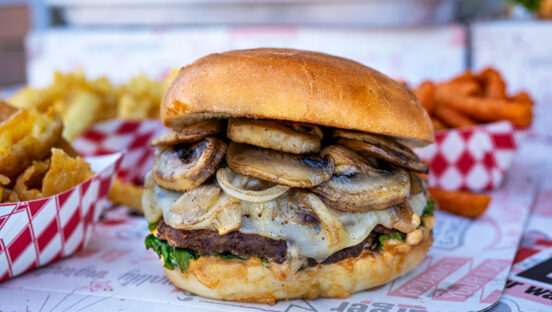Restaurants built around the ghost-kitchen model may not have their own location, but that doesn’t mean they can’t make a deeper connection with guests. Many see the business opportunity with ghost kitchens as part of the third-party delivery revolution. Success stems from reduced overhead of shared rent and talent. While the opportunity appears ripe for the picking, creating a restaurant brand still requires a dedication to developing genuine brand foundations. Just because people have chosen to have your food delivered instead of eating inside the four walls doesn’t mean they no longer care about authenticity.
Restaurants that rise to the top share some commonalities between them. They’re usually well-funded. They have stellar operations and a dedication to processes. And, most, have heart. They act more human. That last piece is a critical component that’s not so easily created for any restaurant brand, let alone one built for a ghost-kitchen scenario.
Many restaurateurs are looking for the million-dollar idea. They want to maximize revenue and profits. Branding is usually seen as a necessary component. Often, it’s not fully understood. Branding is built on heart and with a purpose that’s meant to drive the restaurant from every discipline and work stream. Yet, we still encounter restaurant experiences that have a pretty face, and no soul. It’s a telltale sign of a poorly activated brand strategy, or leadership that doesn’t get it.
With the ghost kitchen setup, the chances of this happening are greater. To some, the opportunity seems like a get-rich-quick scheme due to the low cost of entry. While the investment level in equipment and operations may be lower, the need for investing in brand strategy, development, and marketing is even greater than your standard brick-and-mortar restaurant brand. Without this, any brand will be floating dead in the water.
Be a genuine storyteller
While I think the word “storyteller” is overplayed, it is the right word for the job. People want to be entertained now more than ever. In a sea of brands vying for attention, profound, genuine, and entertaining stories are the ones that get noticed and shared. Social media is the No. 1 channel to tell the many facets of your story. With the high accessibility of video, telling the story is easier than ever. But what is that story? It’s deeper than the food and how it’s made. Great stories are about people, passion, and vision. Most importantly, they aren’t fabricated.
Become a stickler for consistency and quality
The only true physical experience a patron will have with your brand is when they get their food. And although you cannot control how the delivery driver treats the food, you can control the quality and consistency. Restaurant brands who leverage third-party delivery cannot afford to dump food into packaging and send it out the door. The food should be crafted and compiled with consistent precision and quality. People will notice the difference and it will serve as a hallmark for the brand experience. One worth talking about. Ahem … word of mouth.
Packaging is paramount
Not only should it serve the utilitarian purpose of carrying food, it should push people to want to learn more about the brand itself. Rubber stamping a brown bag, or simply throwing a logo onto something is a huge missed opportunity. The packaging is the only touchpoint beyond the food that a person will experience. It’s time to take the packaging serious and think of new ways it can be memorably designed. Packaging can create numerous opportunities to seed story tidbits and build intrigue into learning more. For instance, what else can be put into the bag to make an impact with the guest? Hello Happy Meals! You were onto something.
Outside of the marketing opportunities with packaging, the quality of the packaging itself must be considered. Getting a complimentary set of flimsy plastic utensils probably doesn’t send a very good message about the care you put into your food. The packaging you select is a direct representation of the respect you have for the food you make. It will directly affect the guest experience and perceptions of your brand.
Market the brand like a maverick
Marketing may sound like an obvious need, but far too many concepts don’t take marketing seriously. When a ghost kitchen restaurant brand’s only touchpoint available is a listing among many others, marketing becomes vital. Your brand’s website and social channels have just jumped to the top of list of important experiential opportunities. A simple website with pictures and a menu is a missed chance to tell deeper stories about the brand, the origin of the food, and the people behind it. Same goes for the brand’s social media channels. It’s time to kick things up beyond food pictures and industrial-era advertising slogans. You have to market like a digital maverick, and tell stories worth remembering to get the attention of today’s fickle audiences.
Ghost kitchen brands must tell genuine stories and provide remarkable experiences with the opportunities they have the ability to guide. Without the full immersion of a brick and mortar, restaurants should put more importance on the quality of experience guests will have with their brand when it’s out of the brand’s control. Just because they’re called a ghost kitchen, doesn’t mean they can’t have a soul. As consumer’s distance themselves from the human connections of physical experiences, finding and communicating that soul is critical to brand success.
Joseph Szala is the principal and brand strategist of Vigor, a restaurant and beverage branding and marketing studio. He’s the voice behind the Grits X Grids podcast, and avid blogger and author, and thought leader for the food and beverage industries.











